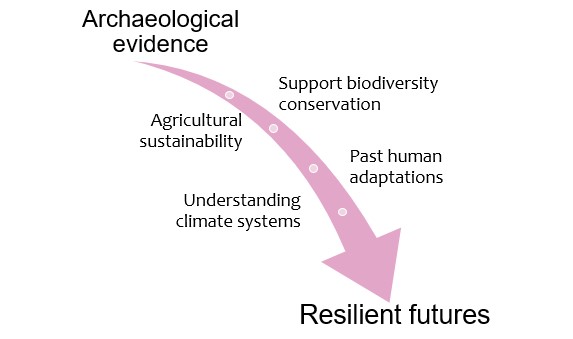Seeing humans as part of biodiversity and part of the solution
Postdoctoral research associate Tabitha Kabora reflects on the upcoming COP26, the importance of international cooperation and coordination in conservation efforts and how archaeology is integral in building resilient futures.

The upcoming United Nations Climate Change Conference (COP26) scheduled for November 2021, reminds us of the importance of the international cooperation and coordination needed to support the implementation of the Paris Agreement and the United Nations Framework Convention on Climate Change. The great risk that climate change poses to biodiversity and human health has been widely discussed and forms the backbone of the conference’s agenda.

Figure 1: Summary of the UN COP26 goals
In addition to slowing down carbon emissions, the COP26 aims to support adaptation practices that will protect communities and natural habitats in the face of climate change. The intertwined nature of the vulnerabilities facing humans and natural habitats mean that providing sustainable and resilient infrastructure and land use practices will not only benefit local communities but biodiversity as well. Reports such as the Living Planet Report 2020 have outlined the effects that human activities and climate change have had on biodiversity. The declines in species reported can be alarming to consider and require immediate action, for which efforts such as the COP26 will be crucial.
In all this work it is important to recognise how humans are part of biodiversity and that exploring how humans have interacted with their environments in the past can help craft better policies and practices for sustainable futures. Archaeology plays an important role in understanding how communities developed technological and social solutions to changing environmental conditions as well as insights into failures and successes. Boivin and Crowther in their 2021 paper “Mobilizing the past to shape a better Anthropocene” outline the ways in which archaeology can meet our present challenges and in many ways support the goals of COP26.

Figure 2: Ways in which archaeological evidence can support the goals of COP26 and pathways to a more resilient future.
Archaeological and palaeo-ecological data can provide insights on past biodiversity which support the development of modern baselines that guide conservation efforts. Using data on what we think past landscapes and habitats looked like can help us better understand how current and future conservation efforts can support the conservation of a wide range of species and habitats. Research into past societies that engaged in agriculture can improve understanding of practices that build resilient communities and agroecosystems that support biodiversity conservation, including in the diversification of crop species. Exploring how past societies engaged in agriculture, utilising a wide variety of crops and employing soil and water conservation techniques provides us with a blueprint for building more sustainable agricultural practices. The long-term perspective offered by archaeological record is relevant in understanding the changes in climate systems over time. This information can be used to shed light on past human adaptations to changing climate and the factors that helped or hindered resilience to these changes.
While transforming archaeological research into policies and practices is by no means easy, looking at the existing evidence of how humans have adapted to changing environments provides us with a starting point from which to build better practices and adaptations for a better future. In this way archaeological evidence can support achieving COP26’s goals and support other efforts in building resilient communities and ecosystems. By looking at how past communities adapted to survive changing climates and environments we can also garner hope for the future of our survival in a changing world.
Related links
Find out more about Tabitha Kabora's research.
Related links
Find out more about Tabitha Kabora's research.